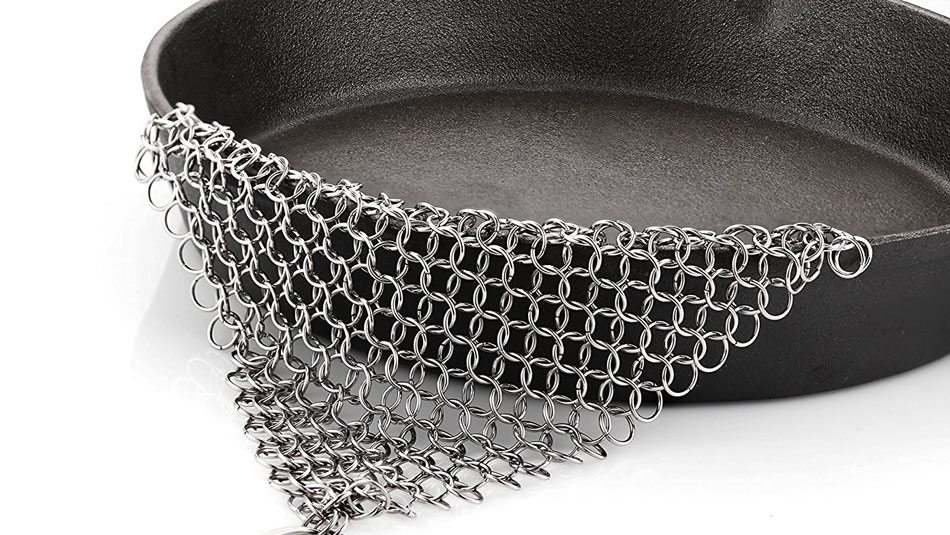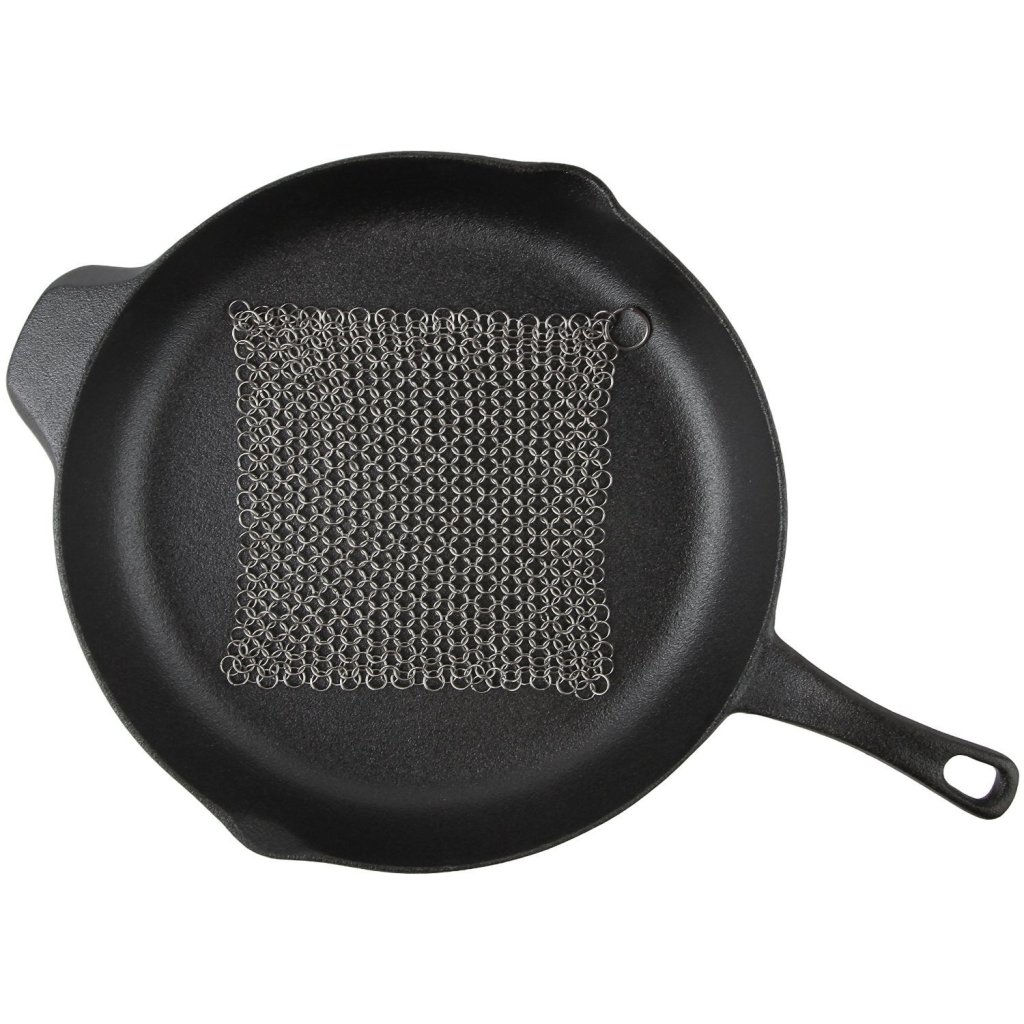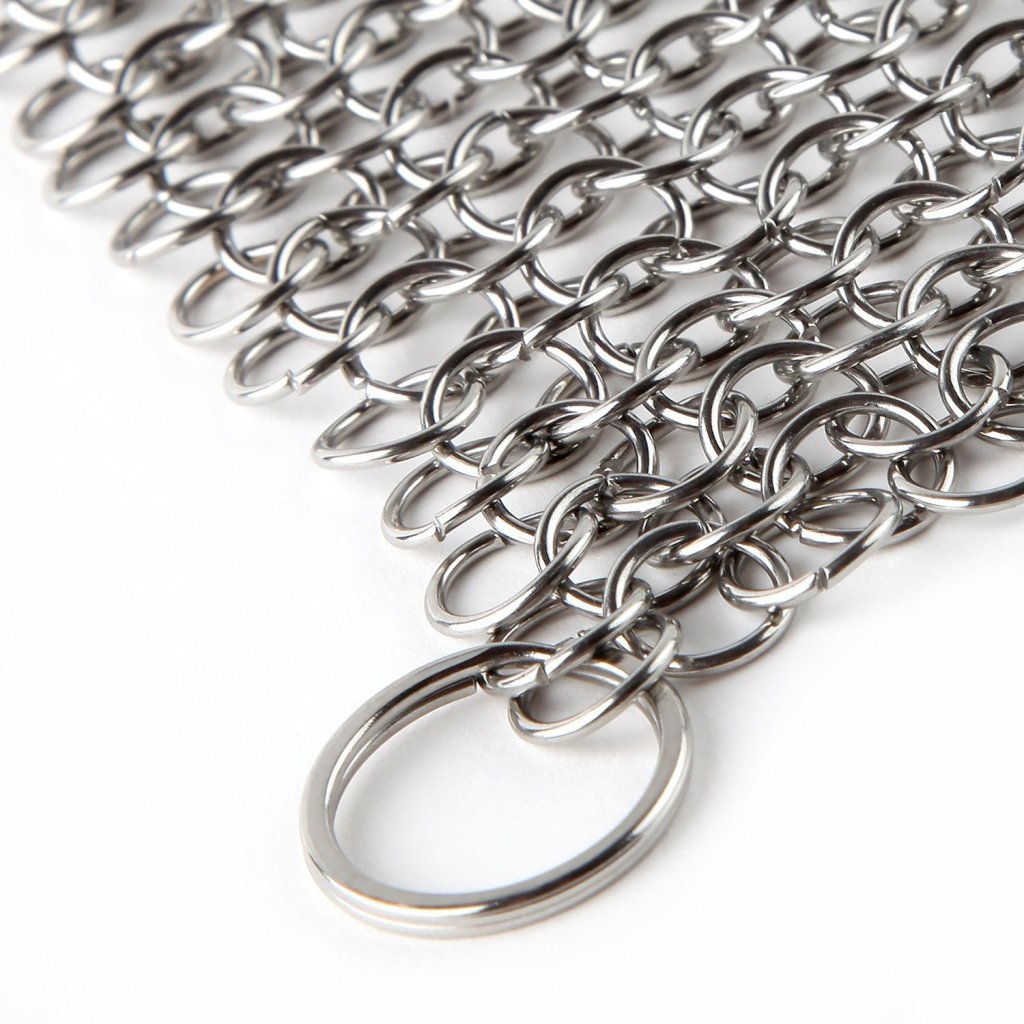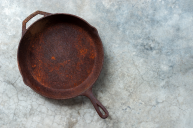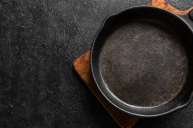Cleaning a cast iron skillet can be a daunting task if you've never done it before, or if you just aren't comfortable with the idea of ruining your perfect seasoning job. Cleaning cast iron skillets can be counterintuitive, but that's what makes them so brilliant - it preserves the best parts of your cooking and works to flavor every single dish you make in it.
Videos by Wide Open Country
So what do you do, then, when the time comes to give that ol' cast iron pan a scrub down? You break out this chainmail scrubber cleaning tool that you can order on Amazon (with Prime shipping, no less) for less than $15.00. Seriously.
I don't think a product review means anything unless there's a bit of personal experience thrown in, so I'm officially stating that this is the best option I've found for cleaning gunk out of my cast iron skillet that I use about four nights of the week.
I have a 10-inch Lodge cast iron that is perfect for the size of my kitchen at the moment, and I alternate that pan with my 12-inch cast iron enamel skillet I love (you can read about that here). The chainmail scrubber helps me clean up both pans easily, which isn't easy when the rules of cleaning cast iron are full of no-nos.
How To Clean Cast Iron Cookware
To clean cast iron cookware, you should never: use soap, use steel wool, or put it in the dishwasher. Those three don'ts will strip the seasoning completely or make it impossible for your cast iron to dry rust-free. If there's one thing that can ruin a cast iron skillet, it's rust. So to avoid that, I use the simple salt and paper towel technique.
After cooling my cast iron, I pour hot water into the pan with about three tablespoons of sea salt. I like the larger flakes of sea salt for this task over kosher salt, but any ol' salt you have around will work. If you have a bigger cast iron than 10 inches, feel free to use 1/4 cup. I start with salt to just get the food residue out of the pan because I know that I'll have to go right to this step anyways.
The best way I found to clean cast iron was to use a sponge, but this is where the chainmail scrubber changed my life. Instead of ruining one sponge per cast iron clean, this chainmail scrubber has made my cleaning routine that much more effective.
How to Clean Cast Iron Cookware with Stainless Steel Chainmail Scrubber
I simply run hot water into the skillet and move the scrubber around the whole skillet, pressing harder in spots to remove crusty bits. The gunk is caught between the rings of the tool and seamlessly pulls up stubborn bits of blackened chicken skin or large (burnt) pieces of minced garlic that stuck to the pan.
Using salt is hardly necessary anymore because the rings are so effective. So that's saving me money on sponges and salt, which as any home cook knows, is the most important ingredient in your kitchen.
To finish the process, I repeat the seasoning process after every serious scrubbing. I dry out the skillet on low heat on the stove, then I re-season it. That's just adding a light coat of Crisco shortening around the entire pan (make sure to get the handle, sides, outside, and bottom) on a paper towel.
You can also use a cooking oil (canola oil or vegetable oil), but I prefer the control of the shortening because it's thicker. I take one more paper towel and wipe up the excess oil. You want shiny, not sticky. That's important: shiny, not sticky.
I place it upside down in my oven and heat the oven to 400 degrees - when it reaches that high temperature, I simply turn the oven off and let it sit for one hour.
Store in a dry place for extended periods of time. And that's how you season a cast iron skillet.
